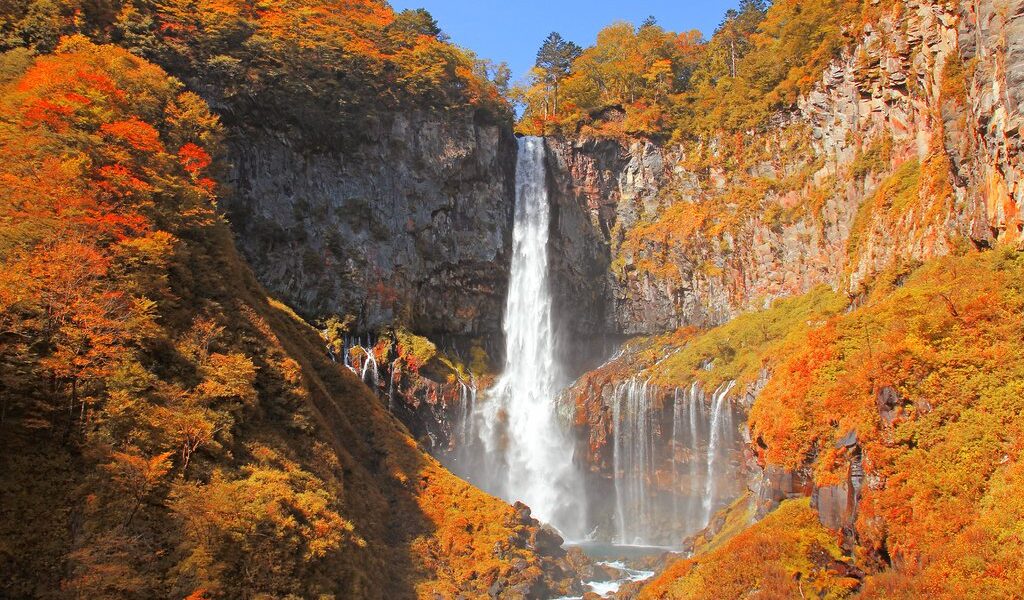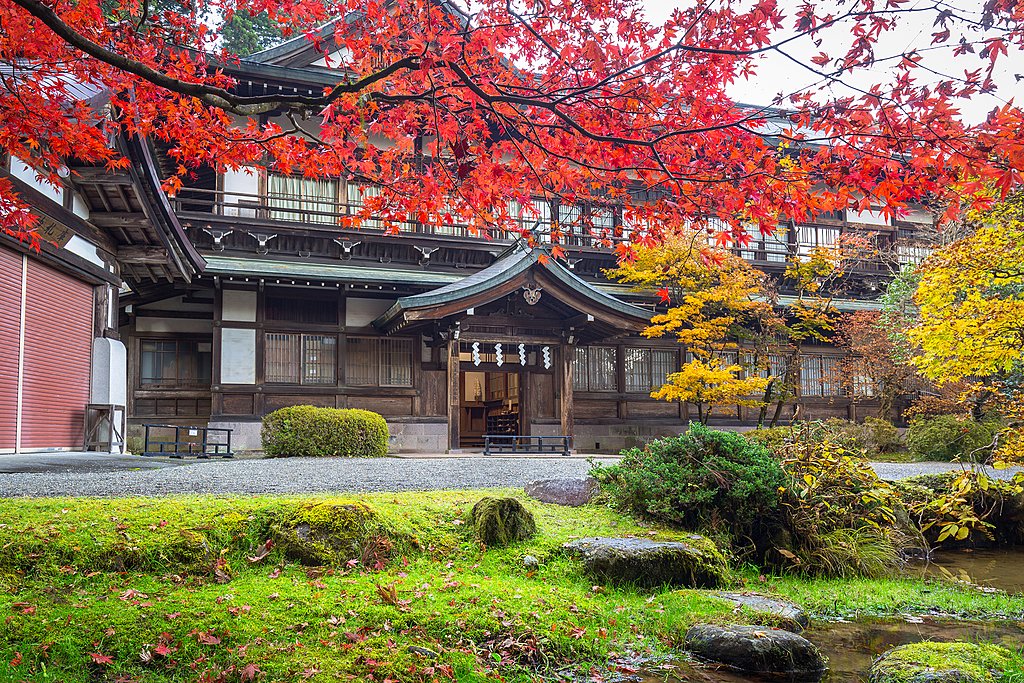
Just a two-hour train ride from the bright lights of Tokyo, you’ll find the urban escape of your dreams. Nikko offers centuries-old shrines to explore, natural hot springs with views of brilliant fall foliage, and Japan’s first Western-style hotel. Get out of the city and dive into historic Nikko with this ultimate guide.
## Unveiling the Wonders of Nikko: A Journey Beyond Tokyo
Nikko, a destination that feels like a world apart, despite being a mere train ride north of the vibrant and bustling metropolis of Tokyo, beckons travelers with its serene beauty and profound cultural significance. This captivating town and its encompassing Nikko National Park stand as a testament to centuries of Buddhist and Shinto mountain worship, inviting visitors to discover their own personal sanctuary amidst the area’s breathtaking landscapes. Picture yourself immersed in the soothing embrace of scenic *onsen*, traversing enchanting trails, marveling at the tranquil beauty of pristine lakes, and standing in awe before the cascading majesty of magnificent waterfalls. Nikko proudly boasts a collection of UNESCO-listed shrines and temples, each a treasure trove of history and artistry, with one particular shrine standing out as the most extravagantly decorated in all of Japan, a true masterpiece of craftsmanship and devotion.
While Nikko might not be a standard stop on the well-trodden Kyoto-Tokyo tourist path, its accessibility from Tokyo makes it an ideal destination for a memorable side trip. For those with an adventurous spirit and a desire to maximize their time, a day trip is certainly feasible. However, considering the time required for transportation, indulging in a one or two-night stay is highly recommended. This allows for a more relaxed and immersive experience, freeing you from the constraints of a rushed itinerary. You’ll be able to savor the opportunity to explore the intricate details of the shrines and temples at your own pace, embark on invigorating hikes amidst nature’s splendor, and, perhaps most importantly, avoid the overwhelming crowds that can sometimes gather at Nikko’s most renowned attractions. Once your exploration of Nikko comes to an end, you have the option of returning to the familiar comforts of Tokyo or venturing onward to explore the geothermal wonders of Hokkaido or the untamed beauty of the rugged and remote Northern Honshu region.
## A Seasonal Symphony: When to Visit Nikko
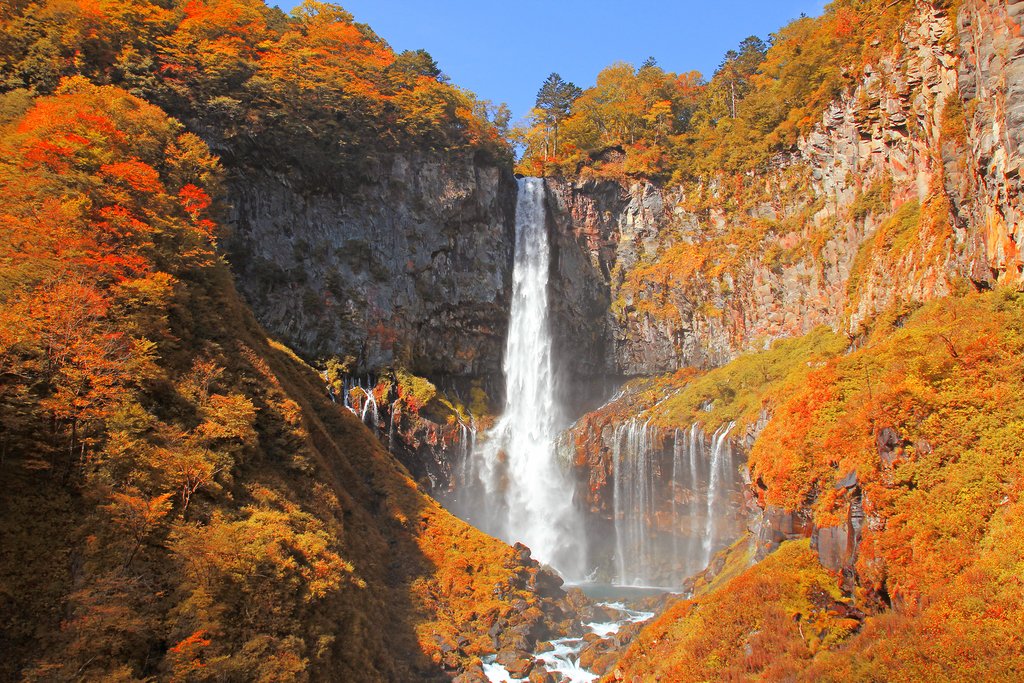
Autumn reigns supreme as the most enchanting season to experience the captivating allure of Nikko. The landscape transforms into a breathtaking tapestry of vibrant colors, as dazzling foliage paints the hillsides in hues of red, orange, and gold. The crisp, refreshing air adds to the invigorating atmosphere, making it the perfect time for outdoor adventures. However, be prepared for the peak leaf-peeping season in October and November, which also brings a surge in visitors eager to capture the stunning scenery. This translates to slower traffic conditions, both within the town itself and on scenic routes such as the winding Irohazaka road. Amidst the autumnal splendor, indulging in a traditional *onsen* experience becomes even more appealing. Yumoto stands out as an excellent choice, offering rejuvenating baths with captivating vistas of the surrounding leaves as they undergo their seasonal transformation.
During the summer months, Nikko experiences hot and humid conditions, coupled with a larger influx of tourists. Despite the heat, Nikko National Park is undeniably at its prime during this season. Make sure to visit Lake Chuzenji, one of the highest altitude lakes in the country, providing a refreshing escape from the summer heat. Its relatively cooler temperatures make it an ideal location for a scenic hike, allowing you to immerse yourself in the natural beauty of the area. Upon returning to town, seek refuge from the heat with a serving of *kakigori*, Nikko’s delightful rendition of shaved ice. This local specialty comes with a variety of delectable toppings, including matcha, lemon milk, and melon syrup, offering a sweet and cooling treat.
As winter descends upon northwestern Nikko, the landscape undergoes a dramatic transformation, turning it into a haven for snow sports enthusiasts. The resorts of Oku-Nikko beckon with opportunities for downhill skiing and snowboarding, allowing you to carve through pristine powder while surrounded by breathtaking scenery. Snow-shoeing and cross-country skiing provide alternative ways to explore the winter wonderland, immersing yourself in the tranquil beauty of the snow-covered landscapes. The resulting panoramas are nothing short of postcard-perfect, offering unforgettable views that will stay with you long after you’ve left.
## Navigating Your Way to Nikko: Transportation Options
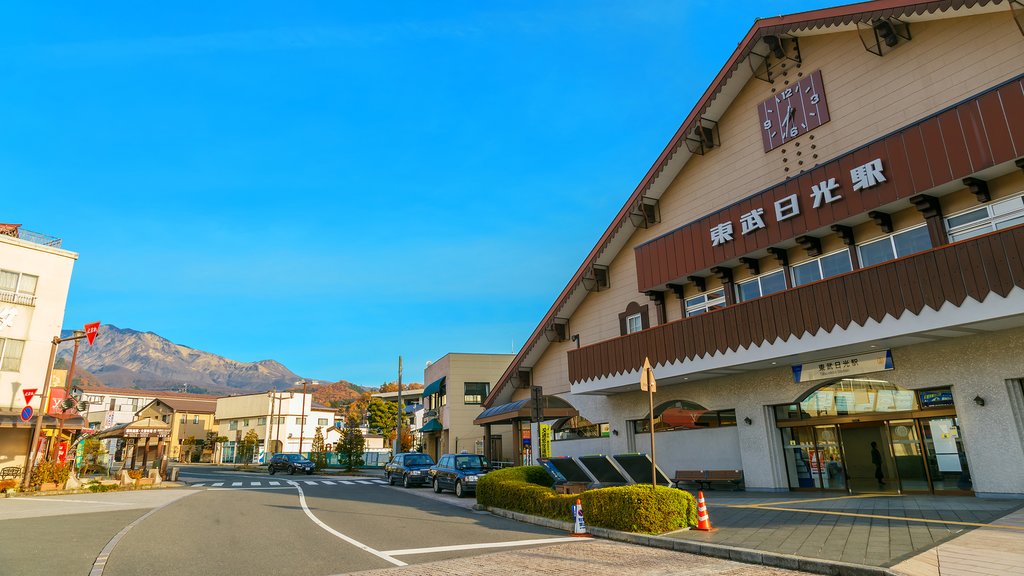
Located approximately 78 miles north of Tokyo, Nikko is easily accessible thanks to the numerous express railway options connecting the two cities, making it a seamless and convenient overnight excursion. Tobu Railways operates direct train services from Asakusa and Shinjuku/Ikebukuro to Tobu-Nikko station, with a journey time of around two hours each way. The limited express trains, while slightly more expensive, offer the convenience of no transfers and run frequently, with departures occurring once or twice per hour. The somewhat cheaper express and local trains, which are not available from Shinjuku, may require up to three transfers, so be sure to factor that into your travel time. Please note that the Japan Rail Pass is not valid on Tobu Railways trains. However, JR service is also available to Nikko, although it necessitates a transfer in Utsunomiya.
In addition to train travel, buses are available from Narita Airport and Gumma Prefecture, although availability may vary depending on the time of year. Once you arrive in Nikko, you’ll find that most of the main attractions are conveniently clustered together, situated about 1.5 miles from the train station. You can easily hop on a city bus to reach the heart of the action, or enjoy a pleasant 30-minute stroll to soak in the atmosphere of the town. For travelers keen on exploring the expansive Nikko National Park, renting a car or joining a guided day tour is recommended, providing the flexibility to reach more remote areas. However, it’s worth noting that some hiking trails are accessible within walking distance or via city bus from the town center, allowing for convenient exploration of the surrounding natural beauty.
## Unveiling Nikko’s Treasures: Highlights & Hidden Gems

### Toshogu Shrine: A Shrine of Opulence and History
Toshogu Shrine, a UNESCO World Heritage site and one of the most celebrated shrines in Japan, stands as a sprawling complex encompassing numerous noteworthy structures. The entrance is guarded by both Shinto Torii gates and Buddhist gates, symbolizing the harmonious integration of these two religions within Japanese culture. Upon entering, you’ll be greeted by a magnificent five-tiered pagoda dating back to the 19th century, as well as the “Dutch Candelabra,” a gift presented to the Tokugawa shogunate during the early days of foreign trade. Throughout the complex, you’ll notice hundreds of stone and iron lanterns, each representing a gift to the Tokugawa family from various feudal lords, showcasing the power and influence of this prominent clan.
Don’t miss the opportunity to visit the stable building, where you’ll find the renowned triptych of the three wise monkeys, the origin of the age-old mantra “Hear no evil, see no evil, speak no evil.” The intricately decorated portable shrine, believed to house the spirit of Tokugawa Ieyasu, is also on display, primarily used during the grand procession of the shrine’s annual festival in May. For those seeking a more spiritual experience, a climb of 200 steps through the verdant mountainside behind the shrine leads to the grave of Tokugawa Ieyasu, a place where the faithful come to pay their respects to the shogun-turned-deity.
### Nikko National Park: A Realm of Natural Splendor
Even a short drive along National Route 120 into the rolling hills of Nikko will reveal why the Japanese Imperial Family has long considered this area their preferred vacation destination. Begin your exploration at Lake Chuzenji, nestled at the foot of the sacred Mount Nantai. Embark on a scenic boat tour, savor a cup of tea at the historic British Embassy villa, and wander along the picturesque lakeside trails, with the option of circumnavigating the entire lake in a 15.5-mile loop. Alternatively, ascend to the Chuzenjiko Skyline road for breathtaking panoramic views of the lake and surrounding landscape.
The nearby Kegon Waterfall is a must-see attraction, renowned as the most famous waterfall in the park and the second-tallest in all of Japan. Witness the awe-inspiring 328-foot cascade from the free observation deck, or opt to pay a small fee to take an elevator down to the base for an unparalleled viewing experience. Ryuzu Waterfall is another captivating sight, particularly stunning during the autumn months when the changing leaves create an even more dramatic backdrop. Stretch your legs with a leisurely walk upstream from the falls along a pleasant nature trail, immersing yourself in the tranquility of the surrounding forest.
The activities within Nikko National Park are seemingly endless. Embark on a challenging day hike to the summit of Mount Nantai, ride a gondola to the top of Akechidaira Plateau for sweeping views, or enjoy a relaxing stroll (or cross-country ski adventure) through the expansive Senjogahara Marshland.
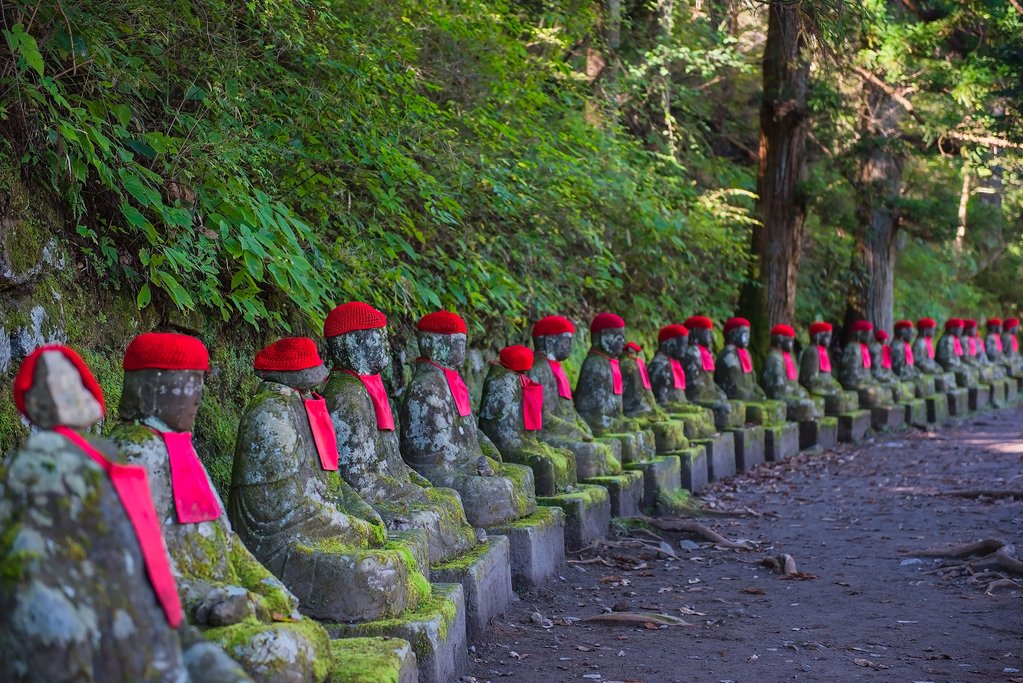
### Kanmangafuchi Abyss: A Riverside Sanctuary of Stone Statues
Take a walk along this serene riverside path in the heart of Nikko, adorned with over 70 stone statues known as Jizo. These Jizo figures represent a Bodhisattva spirit who serves as a guardian over the deceased and protector of travelers. The abyss itself is a volcanic valley sculpted some 15,000 years ago by the erupting Mount Nantai. As you stroll along the path, enjoy captivating views across the river of the Nikko Botanical Garden, another worthwhile attraction. The Kanmangafuchi Abyss is particularly enchanting during *sakura* (cherry blossom) season, typically spanning from April to early May, when the delicate blooms add a touch of ethereal beauty to the landscape.
### Futarasan Shrine: A Shrine of Ancient Origins
Founded in the year 767, Futarasan Shrine holds the distinction of being the oldest shrine in Nikko. Its architecture is less ornate than its neighbor, Toshogu, and it also tends to be less crowded, offering a more peaceful and contemplative experience. Named after Mount Nantai, Futarasan was erected in honor of three mountain deities and houses a collection of artifacts, including two swords that are recognized as National Treasures of Japan. Further into the Nikko National Park, you can discover Futurasan’s two sister shrines: one perched atop Mount Nantai, and the other situated on the northern shores of Lake Chuzenji.
### Nasu-Shiobara Onsen: A Geothermal Oasis of Relaxation
For travelers who prioritize relaxation and rejuvenation through traditional onsen experiences, a beeline to Nasu Shiobara is highly recommended. This geothermal area, nestled in the northwestern corner of Nikko National Park, offers a plethora of onsen options to choose from. You can spend the morning at Nasu Onsen, located on the slopes of the volcanic Mount Nasudake, and then immerse yourself in the forested tranquility of Shiobara Onsen in the afternoon. Beyond onsen indulgence, Mount Nasudake offers fantastic hiking opportunities, boasting numerous trails, suspension bridges, and cascading waterfalls.
## A Culinary Journey: Where to Eat in Nikko
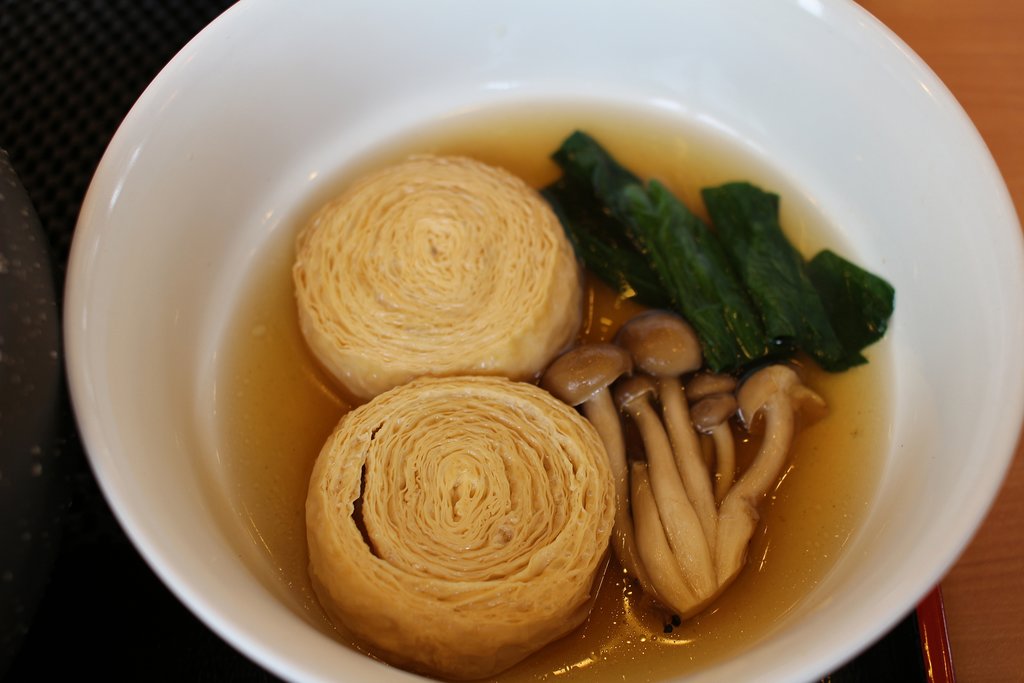
Indulge in a memorable lunch at **Zen**, and be sure to order the yuba tasting menu. Yuba, also known as “tofu skin,” is a unique byproduct of boiled soymilk and a celebrated regional specialty. Zen is the ideal place to savor yuba in a variety of exceptional dishes, allowing you to fully appreciate its subtle flavors and textures. If you don’t have the chance to visit Zen, don’t fret: you can find yuba incorporated into a wide range of dishes throughout Nikko, from soba noodles to delectable sweet custards.
Reserve a meal at the historic **Nikko Kanaya Hotel**, the first Western-style hotel established in Japan. With over a century of operation and an enviable location across the street from Toshogu, the Nikko Kanaya Hotel has become an attraction in itself, having hosted a long list of famous guests throughout its illustrious history. Dinner here is an elegant affair, offering a delectable fusion of Japanese and French culinary traditions. This iconic hotel offers a glimpse into a bygone era, promising an unforgettable dining experience steeped in history and refinement.
B-1449

